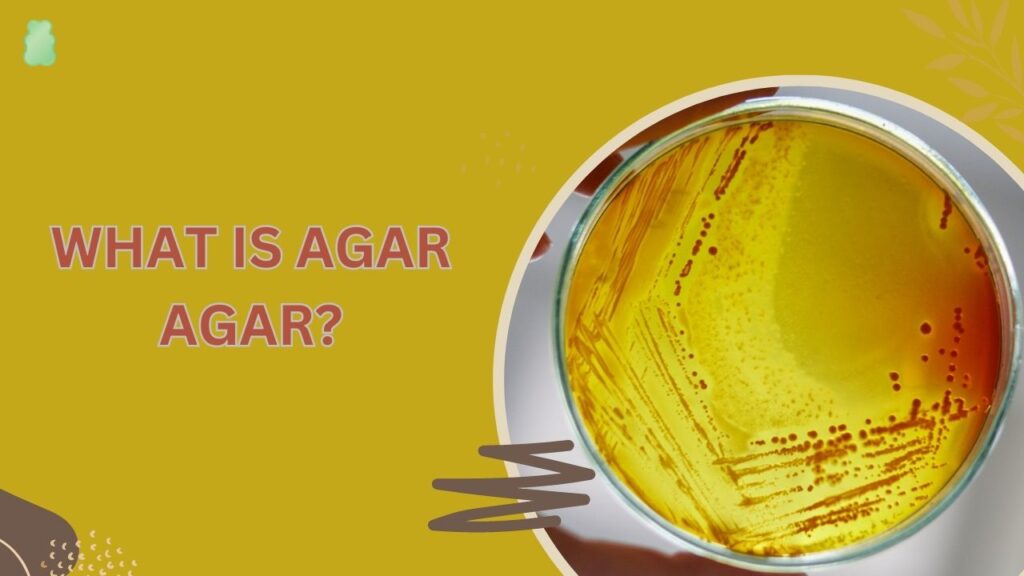Table of Contents
ToggleAgar, a gelatinous substance derived from red algae, has a wide range of applications spanning from culinary arts to scientific research. With our in-depth research team and a group of experts working to give you the best of their experience, this article will delve into the unique properties and characteristics of agar, its production process, and its various uses across different industries.
What is Agar?
Agar, also known as agar-agar, is a gelatinous substance derived from certain species of red algae, primarily from the genera Gelidium and Gracilaria. It has been used for centuries in Asian cuisine as a gelling agent, thickener, and stabilizer. Its unique properties, such as its ability to form a firm gel even at low concentrations, have made it a popular ingredient in various industries, including food, cosmetics, pharmaceuticals, and microbiology.
The unique characteristics of agar can be attributed to its polysaccharide content, specifically agarose, and agaropectin. Agarose is responsible for the gelling properties, while agaropectin contributes to the viscosity and stability of the gel. Agar has a melting temperature of around 85°C (185°F) and a gelling temperature of 32-40°C (90-104°F), making it suitable for a wide range of applications.
Also Read: https://realgoodgummies.com/list-of-top-10-fruits-high-in-pectin
Agar’s versatility has led to its use in various industries, including:
Culinary arts, where it serves as a vegetarian and vegan alternative to gelatin
Microbiology, where it provides a solid medium for culturing microorganisms
Cosmetics and skincare, where it acts as a thickening agent and stabilizer
Pharmaceuticals, where it is used in drug delivery systems and as a stabilizer.
Also Read: https://realgoodgummies.com/pectin-vs-gelatin
Agar Production and Sourcing
Agar production begins with the harvesting of red algae, primarily from the genera Gelidium and Gracilaria. Once harvested, the algae are washed thoroughly to remove impurities and then boiled in water to extract the agar. The resulting liquid is filtered and cooled, allowing the agar to solidify. The solid agar is then dehydrated, either through air drying or freeze drying, and ground into a powder or formed into flakes or bars.
The majority of the world’s agar supply comes from countries with extensive coastlines and favorable growing conditions for red algae, such as Japan, China, South Korea, Chile, and Morocco. Sustainable sourcing and environmental considerations are crucial in agar production, as overharvesting and improper cultivation practices can lead to the depletion of natural resources, habitat destruction, and negative impacts on local communities.
To promote sustainable agar sourcing, organizations such as the Marine Stewardship Council (MSC) and the Aquaculture Stewardship Council (ASC) have established certification programs that recognize responsible harvesting and cultivation practices. These certifications help ensure that agar production has minimal environmental impacts and supports the long-term health of red algae populations and their ecosystems.
Also Read: https://realgoodgummies.com/is-pectin-gluten-free
Culinary Uses of Agar
Agar has long been a staple ingredient in Asian cuisine, particularly in Japan, where it is known as Kanten. Its ability to form a firm gel even at low concentrations makes it an ideal vegetarian and vegan alternative to animal-derived gelatin. Agar is flavorless, odorless, and colorless, allowing it to be easily incorporated into a wide range of dishes and desserts without altering their taste or appearance.
Also Read: https://realgoodgummies.com/liquid-pectin-vs-powder-pectin
Popular agar-based dishes and desserts include:
Fruit jelly: Agar’s firm texture makes it perfect for creating fruit jellies with a variety of flavors and shapes.
Panna cotta: This Italian dessert can be made vegan by substituting agar for gelatin, resulting in a smooth, creamy texture.
Vegan marshmallows: Agar can be used to create vegan marshmallows with a similar texture to traditional marshmallows made with gelatin.
When using agar in recipes, it is essential to dissolve it thoroughly in hot liquid before allowing it to cool and set. The gelling strength of agar can vary depending on the source and processing method, so it may be necessary to adjust the amount used to achieve the desired texture. It is also important to note that certain ingredients, such as fresh pineapple, kiwi, and papaya, contain enzymes that can break down agar and prevent it from setting properly. These fruits should be cooked or canned before being incorporated into agar-based recipes.
Agar in Microbiology and Laboratories
Agar’s unique properties have made it an indispensable tool in microbiology and laboratory settings. Its ability to form a firm, yet porous gel provides an ideal surface for culturing microorganisms, such as bacteria and fungi. The gel’s stability at a wide range of temperatures allows for precise control over experimental conditions, while its resistance to degradation by most microorganisms ensures that it remains intact throughout the duration of an experiment.
There are several types of agar used in scientific research, each with specific applications:
Nutrient agar: A general-purpose medium that supports the growth of a wide variety of microorganisms
Sabouraud agar: A medium used for the cultivation of fungi, particularly yeasts and molds
MacConkey agar: A selective and differential medium used to isolate and differentiate gram-negative bacteria
Blood agar: A medium enriched with blood to support the growth of fastidious organisms and detect hemolytic activity
Agar’s versatility and reliability have made it a cornerstone of microbiological research, playing a critical role in the study of microorganisms, their growth, and their interactions with various substances and conditions.
Agar in the Cosmetic and Pharmaceutical Industries
Agar’s gelling, thickening, and stabilizing properties have made it a popular ingredient in cosmetic and skincare products, such as creams, lotions, and masks. Its ability to form a smooth, even gel allows for the even distribution of active ingredients and provides a pleasant texture for consumers. Additionally, agar’s natural origin and compatibility with a wide range of ingredients make it an attractive option for formulators seeking to create eco-friendly and sustainable products.
In the pharmaceutical industry, agar is used as a thickening agent and stabilizer in various drug formulations, including suspensions, emulsions, and gels. Its ability to form a stable gel at room temperature allows for controlled drug release and ensures that the active ingredients remain evenly distributed throughout the product. Agar’s biocompatibility and low toxicity make it suitable for use in both oral and topical drug delivery systems.
Final Thoughts
In conclusion, agar is a versatile and valuable substance with a wide range of applications across various industries. Its unique properties, such as its ability to form a firm gel at low concentrations and its resistance to degradation by most microorganisms, have made it an indispensable tool in culinary arts, microbiology, and the cosmetic and pharmaceutical industries. As the demand for sustainable and eco-friendly ingredients continues to grow, agar’s importance and relevance are likely to increase in the coming years.
I am building a lifestyle that nourishes my soul and satisfies my passions, which include traveling, indulging in sweet treats, and being physically fit. I am also a lover of dogs (cynophile) and cats (ailurophile). Additionally, I am striving to live a vegan lifestyle.










Pingback: Discover The Best Pectin Substitutes For Your Cooking And Baking Needs